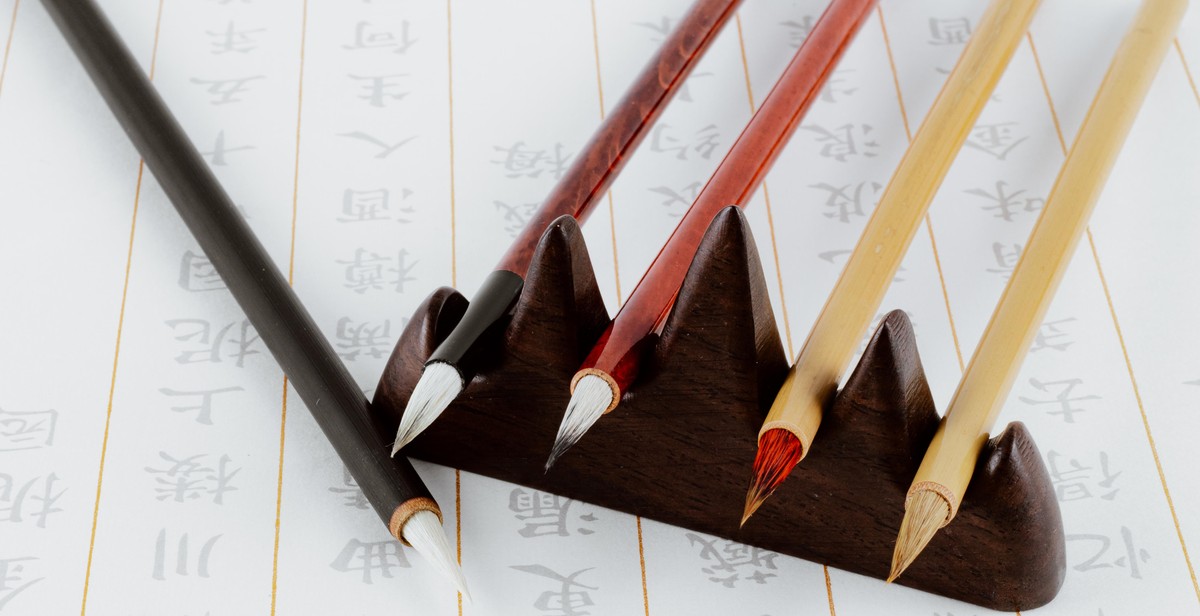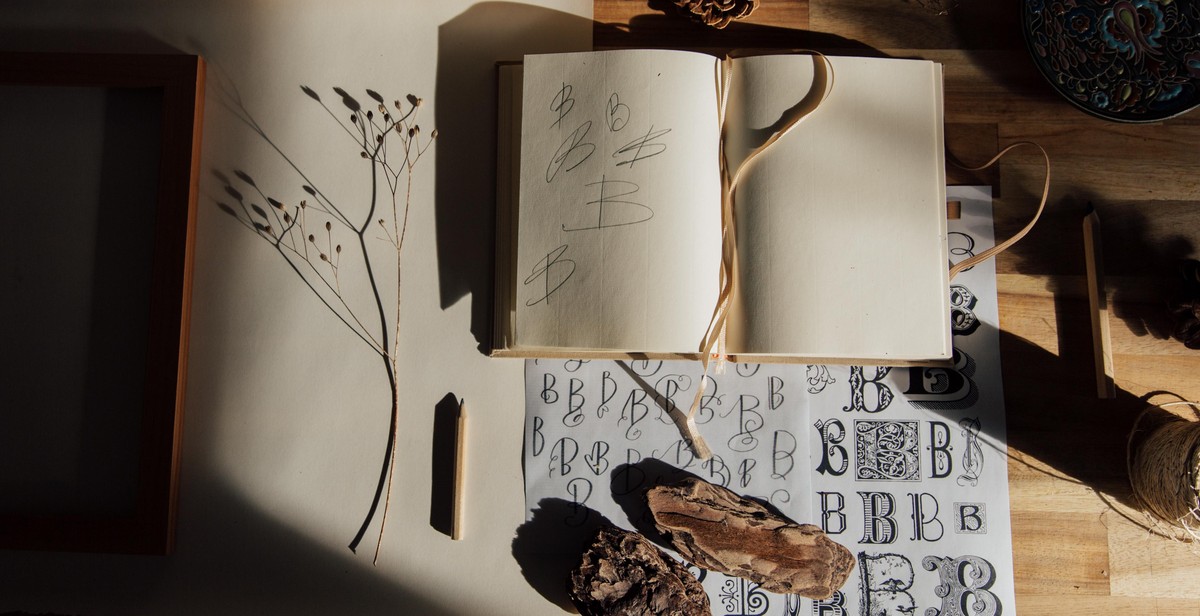How to Master the Basics of Calligraphy
Calligraphy is the art of beautiful writing. It involves creating decorative and stylized letters and words using a variety of tools such as pens, brushes, or even a stylus. Calligraphy has been practiced for centuries and is still a popular art form today.
What is Calligraphy?
Calligraphy comes from the Greek words “kallos” meaning beauty and “graphein” meaning writing. It is a form of visual art that involves creating beautiful and elegant letters and words. Calligraphy can be used to create anything from formal invitations to decorative signs and art pieces.
Calligraphy is not just about writing, it is also about the tools and materials used. Different pens, inks, and papers can create different effects and styles. Calligraphy can be done using a variety of alphabets, such as the traditional Western alphabet, the Arabic script, or the Chinese characters.
Why Learn Calligraphy?
Calligraphy is a beautiful and rewarding art form that can be used in many different ways. It can be a hobby, a career, or a way to add a personal touch to your projects and gifts. Learning calligraphy can also improve your handwriting and help you develop patience and focus.
- Calligraphy is a great way to express yourself creatively
- It can be used to create unique and personalized gifts
- Calligraphy can be a lucrative career
- It can improve your handwriting and attention to detail
- Calligraphy is a relaxing and meditative practice
Whether you are interested in calligraphy as a hobby or a profession, mastering the basics is the first step towards creating beautiful and elegant letters and words. In the following sections, we will discuss the essential tools and techniques needed to start your calligraphy journey.

Getting Started with Calligraphy
Calligraphy is an art form that involves creating beautiful and decorative writing. If you’re interested in learning calligraphy, the first step is to choose your tools and set up your workspace.
Choosing Your Tools
The tools you choose for calligraphy will depend on the style you want to learn and your personal preferences. Here are some basic tools to consider:
- Nibs: These are the metal tips that you attach to a pen holder. There are many different types of nibs to choose from, each with its own unique properties and effects.
- Ink: Calligraphy ink comes in a variety of colors and consistencies. Some inks are better suited for certain types of nibs or paper.
- Pen holder: This is the handle that you attach your nib to. Pen holders can be made of wood, plastic, or metal.
- Paper: Choosing the right paper is important for calligraphy. Look for paper that is smooth, absorbent, and won’t bleed or feather.
Setting Up Your Workspace
Having a dedicated workspace for calligraphy can help you stay organized and focused. Here are some tips for setting up your workspace:
- Choose a well-lit area: Good lighting is essential for calligraphy, especially if you’re working with fine details. Natural light is best, but if that’s not possible, use a bright lamp.
- Get a comfortable chair: Calligraphy can be a time-consuming activity, so make sure you have a comfortable chair to sit in.
- Cover your work surface: Protect your work surface with a mat or a sheet of paper. This will prevent ink from seeping through and staining your table.
- Have all your tools within reach: Keep your tools organized and within easy reach. This will save you time and help you stay focused on your work.
Once you have your tools and workspace set up, you’re ready to start learning the basics of calligraphy.

Mastering the Basics of Calligraphy
Calligraphy is an art form that requires patience, practice, and precision. To become a master calligrapher, you must first master the basics. This section will cover the essential techniques you need to know to start your calligraphy journey.
Understanding Strokes and Pressure
Calligraphy is all about creating beautiful, flowing lines with your pen. To do this, you need to understand the different strokes and pressures that are used in calligraphy. There are two main types of strokes in calligraphy: thick and thin. Thick strokes are created by applying more pressure to the pen, while thin strokes are created by using less pressure. By mastering the art of stroke variation, you can create beautiful letters and designs that are full of character and charm.
When it comes to pressure, it’s important to find the right balance. Too much pressure can cause your letters to look heavy and clunky, while too little pressure can make your letters look weak and frail. Experiment with different pressures until you find the right balance for your style.
Practicing Basic Letterforms
Once you understand strokes and pressure, it’s time to start practicing basic letterforms. This means learning how to create each letter of the alphabet in a consistent and precise way. Start by practicing simple letters like “a” and “o,” then move on to more complex letters like “g” and “q.”
It’s important to practice your letterforms regularly to build muscle memory. The more you practice, the easier it will be to create beautiful letters without thinking too much about it.
Developing Consistency and Control
Consistency and control are essential for creating beautiful calligraphy. To develop consistency, try using guidelines or grids to keep your letters uniform in size and shape. This will help you create a cohesive look across your entire piece of work.
Control is also important for creating clean, crisp lines. This means keeping your pen at a consistent angle and maintaining a steady hand. Practice writing slowly and deliberately to build up your control over your pen.
| Mastering the Basics of Calligraphy |
|---|
| Understanding Strokes and Pressure |
| Practicing Basic Letterforms |
| Developing Consistency and Control |
In conclusion, mastering the basics of calligraphy is essential for becoming a skilled calligrapher. By understanding strokes and pressure, practicing basic letterforms, and developing consistency and control, you can create beautiful, flowing letters that are full of character and charm.

Exploring Different Styles
Calligraphy has a rich history and has evolved over the years. There are various styles of calligraphy that you can learn and master. These styles can be grouped into traditional and modern calligraphy styles.
Traditional Calligraphy Styles
Traditional calligraphy styles have been around for centuries and are deeply rooted in history and culture. These styles include:
- Uncial: This style originated in the 4th century and was used by monks to write religious texts. It is characterized by its rounded, uniform letters and lack of lowercase letters.
- Blackletter: Also known as Gothic script, this style was popular in Europe from the 12th to the 17th century. It is characterized by its dense, angular letters and ornate flourishes.
- Copperplate: This style emerged in the 16th century and is known for its elegant, flowing letters and delicate hairline strokes.
Modern Calligraphy Styles
Modern calligraphy styles have emerged in recent years and have a more contemporary feel. These styles include:
- Brush Calligraphy: This style uses a brush pen to create thick downstrokes and thin upstrokes. It is often used for modern lettering and invitations.
- Hand Lettering: This style involves creating letters by hand, rather than using a traditional calligraphy pen. It is often used for modern designs and artwork.
- Italic: This style is a modern take on traditional calligraphy and is characterized by its slanted, cursive letters. It is often used for invitations and greeting cards.
Creating Your Own Style
While it is important to learn and master traditional and modern calligraphy styles, it is also important to develop your own unique style. This can be achieved by experimenting with different tools, techniques, and letterforms. By combining different styles and adding your own personal touch, you can create a signature style that is uniquely yours.
| Traditional Calligraphy Styles | Modern Calligraphy Styles |
|---|---|
| Uncial | Brush Calligraphy |
| Blackletter | Hand Lettering |
| Copperplate | Italic |

Tips for Success in Calligraphy
Calligraphy is an art that requires dedication, patience and practice. If you want to master the basics of calligraphy, here are some tips that will help you:
Practice, Practice, Practice!
The more you practice, the better you will get at calligraphy. Set aside some time every day to practice your strokes and lettering. Start with basic strokes and progress to letters, words, and eventually phrases. Keep a record of your progress and compare your work to previous sessions. With time, you will see significant improvement in your skills.
Take Breaks and Rest Your Hand
Calligraphy requires fine motor skills and precision. It is important to take breaks and rest your hand to avoid fatigue and injury. Stretch your fingers and wrists, and do some hand exercises to prevent cramping. Take regular breaks to prevent straining your eyes and to refresh your mind.
Experiment and Have Fun
Calligraphy is an art, and like any art, it allows for creativity and self-expression. Experiment with different styles, inks, and papers to find your unique style. Don’t be afraid to make mistakes or try new things. Remember, calligraphy should be fun and enjoyable.
Conclusion
By following these tips, you will be on your way to mastering the basics of calligraphy. Remember, practice, patience, and experimentation are key to success. With time and effort, you will develop your own unique style and create beautiful calligraphy works of art.

Conclusion: Continuing Your Calligraphy Journey
Learning calligraphy can be a rewarding and fulfilling experience. It takes time, practice, and patience to master the basics, but with dedication and persistence, anyone can become a skilled calligrapher.
Reviewing the Basics
Before moving on to more advanced techniques, it’s important to review and refine your mastery of the basics. Practice your strokes, letterforms, and spacing regularly to maintain your skills and improve your consistency.
Remember to use the right tools and materials for the job. High-quality paper, ink, and pens will make a significant difference in the quality of your work.
Exploring New Techniques
Once you feel confident in your mastery of the basics, it’s time to explore new techniques and styles. Experiment with different pen widths, inks, and papers to find what works best for you.
Study the work of other calligraphers, attend workshops, and participate in online communities to learn new techniques and gain inspiration. Don’t be afraid to try new things and make mistakes – it’s all part of the learning process.
Sharing Your Work
Finally, share your work with others. Whether it’s through social media, a blog, or in-person exhibitions, sharing your calligraphy can help you gain recognition, feedback, and new opportunities.
Remember, calligraphy is a journey, not a destination. Keep practicing, exploring, and sharing your work, and you’ll continue to grow and develop as a calligrapher.
